Press release -
Highlights in upcoming Fine Art & Antiques auction at Stockholms Auktionsverk
Royal provenance, rare porphyry objects and monumental museum-worthy works – this fall's Fine Art & Antiques auction offers some rare experiences. One of the most exciting highlights is the marble relief "Bacchante and Satyr" by Bertel Thorvaldsen. Two almost identical versions of this relief are currently displayed at Thorvaldsens Museum in Copenhagen – one in plaster and one in marble. In fact, the piece that is now being auctioned was originally purchased from the sculptor's estate at an auction held at the very same museum in 1849, five years after Thorvaldsen's passing.
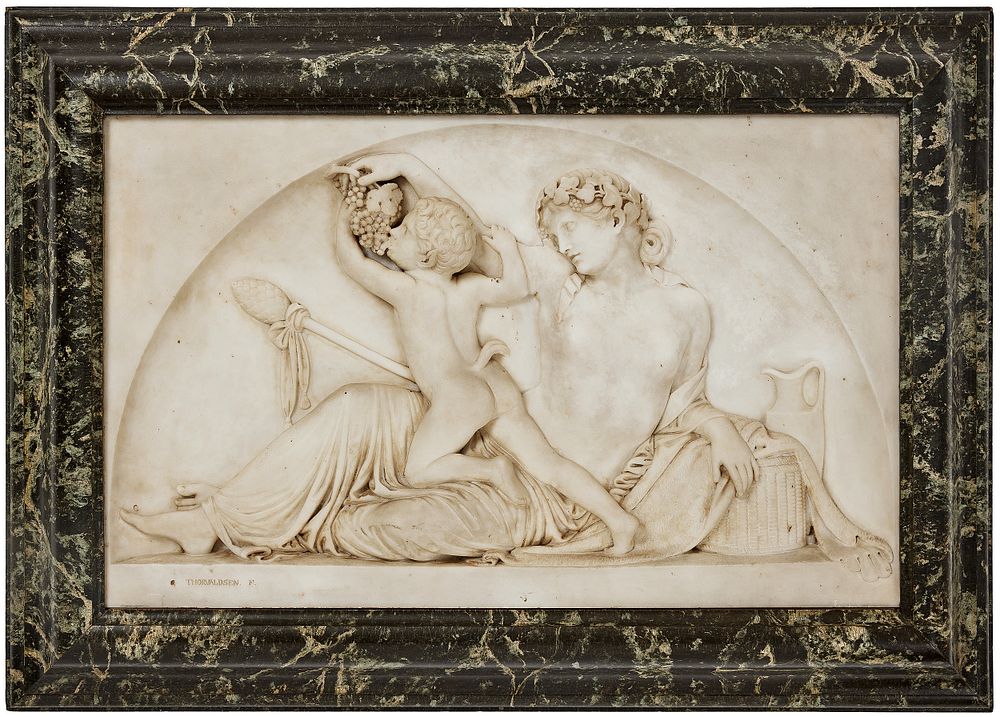
“Thorvaldsen's graceful work has a captivating mythological narrative that has never fallen out of fashion; it continues to impress and almost seduce its viewers for generation after generation. The fact that 'Bacchante and Satyr' is a work of art created with ingenious artistic precision is as true now as it was then. The textures are almost tangible, and the soft movement is so precisely depicted in the hard material, it really do express the timeless beauty of classical art,” says Cecilia Berggren, specialist and head of classical art.
Bertel Thorvaldsen (1770-1844) has been considered one of the most influential sculptors of his time. At the age of 11, he was admitted to the Royal Danish Academy of Fine Arts in Copenhagen, where he was also awarded the fine gold medal and a travel grant that took him to Rome in 1797. He would later refer to his arrival day as 'his spiritual birthday', as he would live and work in the Eternal City for most of his life. Today, the sculptor is honored in both of his hometowns, with Piazza Thorvaldsen on the northern edge of Rome's Villa Borghese and with Denmark's oldest museum – the Thorvaldsen Museum in Copenhagen.
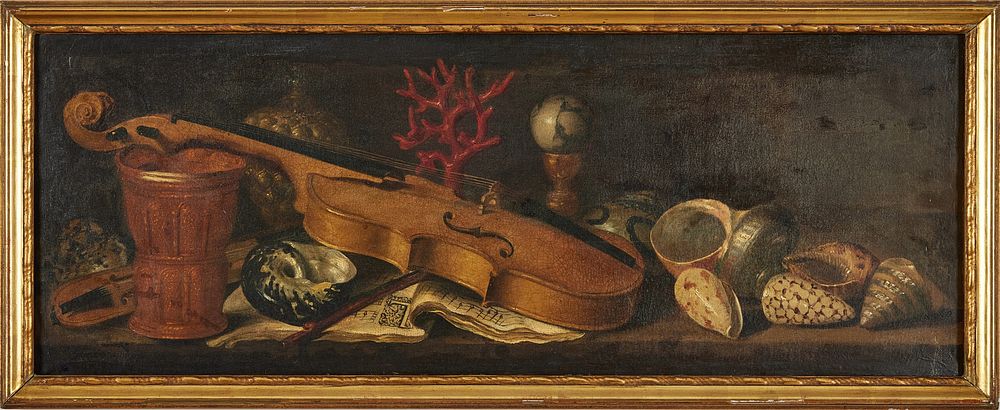
The Old Master paintings listed in the auction are remarkable in their own way, including a collection of very fine 17th century still lifes by artists such as Jan Pauwel II Gillemans, Isaac Vromans, and Jacques Linard. The latter is participating with the piece 'Still life with violin and shells', which has proved to have a particular provenance.
“It is thanks to Mr. Philippe Nusbaumer, who wrote a Catalogue raisonné of Jacques Linard and also helped us with the attribution of this piece, that we have discovered the interesting provenance that this painting probably belonged to the collection of M. de Mortain and most likely also to the collection of Prince de Conti – where it was found and acquired by art expert Pierre Remy. All this information was found in actual auction records from the sales in the late 1770s,” says Ulrica Tillander, specialist in older paintings and Old Masters.
There are only about fifty known pieces of art by the French artist Jacques Linard, who is known for his still lifes that often revolve around our five senses and the four elements. And this painting was depicted in the margin of the auction catalog – in connection with the Prince of Conti sale – by none other than the graphic artist Gabriel de Saint Aubin. This also played a role in the identification of the work and further strengthened its provenance. Louis de Bourbon (1717-1776), Prince of Conti, was one of the most important art collectors of his time, and had a strong interest in arts and crafts in general, but in shells and music in particular. Another artist with a modest output and few known works is the Dutchman Anthonie Beerstraten, who created the lovely winter landscape with ice skaters, signed and dated in the 1660s.
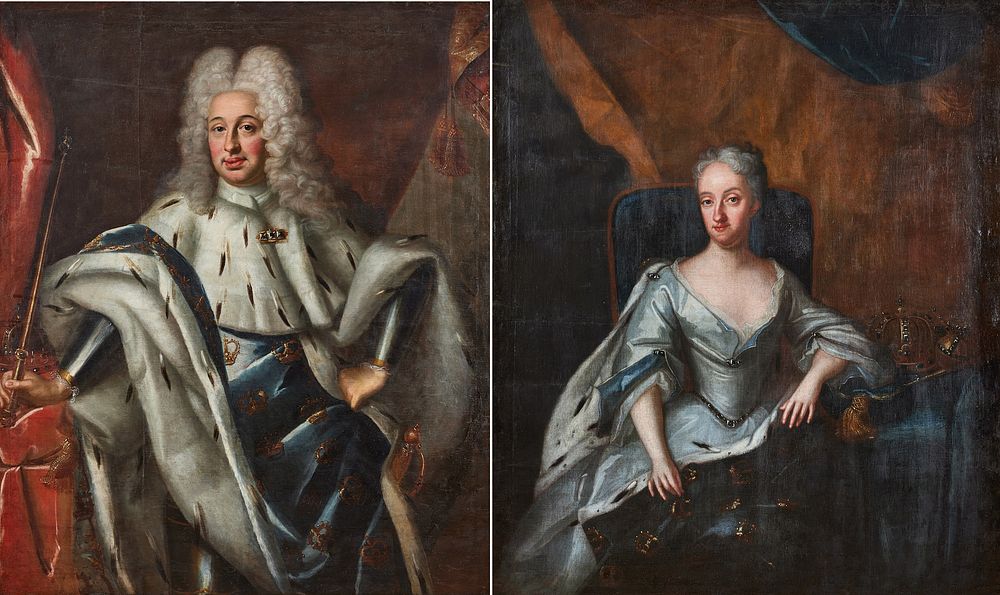
Among the older highlights, you can also find the representational portraits of the Swedish King Fredrik I and Queen Ulrica Eleonora dy. Paintings that aside from their highly royal motifs, also carries royal provenance as they once belonged to Princess Sofia Albertina – sister of King Gustav III. Another stately portrait can be found in 'Portrait of a Lady in green dress', attributed to Peter van der Faes – the artist also known by the more British-sounding name of Peter Lely. He made his career in England where he was appointed Royal Court Painter at the English court under King Charles II and became famous for his portraits of the British aristocracy.
“Another attribution we were able to make at the auction is the painting by Gregorio Preti, depicting St. Bartholomew. It was purchased by the Swedish industrialist Herman Lagercrantz in 1907, during a trip to Naples where he and his good friend, the famous Swedish artist, Anders Zorn each acquired an oil painting for their private collections. They were most likely acting in the belief that they were paintings by Jusepe de Ribera, an extremely popular artist at the time, but today we can ensure that it is Preti who held the brush,” says Ulrica Tillander.
At Stockholms Auktionsverk's Works of Art Department, Markus Anderzon, specialist in antique furniture and works of art, can present some of his selected and most significant highlights.
“It feels particularly exciting to publish an auction that contains this type of unique objects, things that are rarely offered on the market or even to display for the general public. Many items have museum-worthy qualities, yet they are available for anyone to buy. And with very detailed provenance at that, which gives the objects even more of a pulse.”
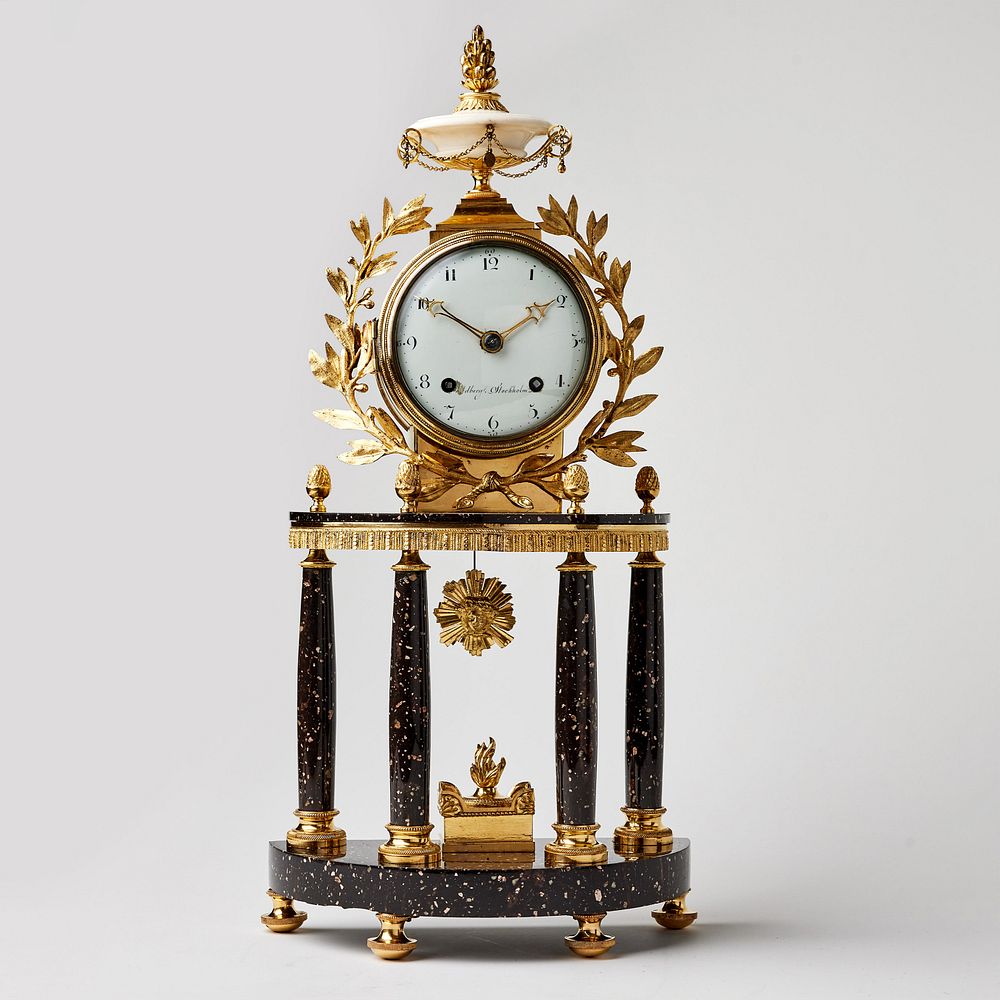
One of the major highlights of the Works of Art category is a high-class late Gustavian Stockholm work – a table pendant made by the royal court clerk and master jeweler Fredric Ludvig Rung (1758-1837). According to family tradition, Rung gave a table pendant of this particular model to each of his daughters, this particular example was made for his third daughter Fredrika Ulrika Rung and has been inherited through four generations before being gifted to its current owner.
“This is undoubtedly a rare opportunity to acquire a piece of high-class Swedish craftsmanship history, which is further strengthened by its unbroken provenance from the year of manufacture to the present day. The table pendant is a clear example of the domestic production that quickly emerged in the wake of the palace building project in Stockholm. The refined combination of beautiful Gammelklitt porphyry and high-class bronze mountings by Fredric Ludvig Rung, is substantial proof of the accomplished skills of Swedish craftsmen,” says Markus Anderzon.
Porphyry is a recurring material among the highlights of the Fine Arts & Antiques auction. The rare material has been popular since the time of the pharaohs, and thanks to the Romans, the shiny stone was also introduced to Europe – then exported from the Egyptian quarries. In the 3rd century, imports stopped, but this did not affect the demand. By the Renaissance of the 16th century, porphyry quarries had declined into oblivion, everyone had simply forgotten where they were once located. Instead, old porphyry objects were taken and reworked according to the prevailing ideals and fashions.
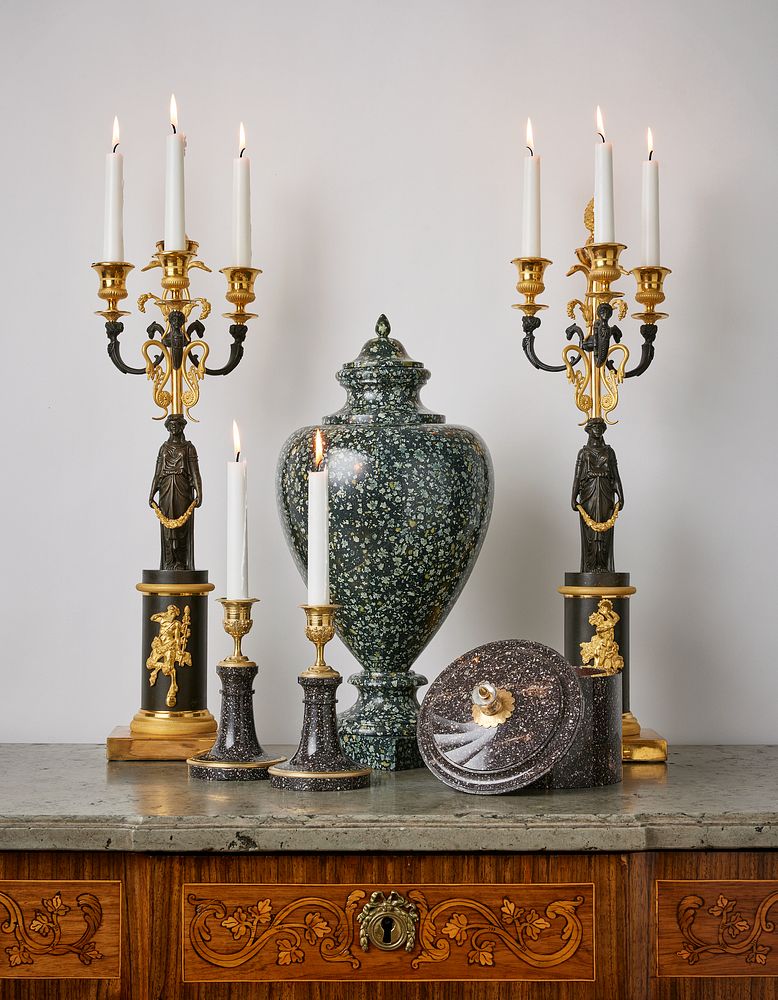
At the end of the 18th century, the exclusive stone – and very local natural resources – became the reason for a major industrial venture in the then very poor area around Älvdalen in the inner parts of Sweden. Elfdals Porphyrverk was founded in Älvdalen 1788 by King Gustav III and was established with a board of directors that was, to say the least, renowned, with members such as Carl August Ehrensvärd, Louis Masreliez, Johan Tobias Sergel and Carl Fredrik Fredenheim. Production of the objects was initially limited, and the porphyry was much more difficult to work with than expected. It was not until the years of Karl XIV Johan, when the new French crown prince had the quarry acquired in the name of his son Oskar, that the business began to flourish.
It is also from this particular time that many of the catalog's most prominent objects originate. Such as the box with lid made of Blyberg porphyry from the first quarter of the 19th century, a pair of table candlesticks made of black Rännå porphyry from around the end of the 18th century, a pair of late Gustavian candlesticks made of Blyberg porphyry dated around 1800, and a Tinguait urn from the second quarter of the 19th century – all with provenance from Elfdals Porphyrverk. Porphyry was originally the work of royalty and high nobility, and for Sweden it was also a currency for trade – Karl Johan exchanged porphyry for burnished bronzes from Paris. Swedish porphyry still maintains a high profile and international recognition. But this fall's Fine Art & antiques also includes a porphyry clock with southern European origins. From the early 19th century, it has been made of sculpted Greek porphyry, the rare Lapis Spartanus marble, to be precise.
“It is a significant piece because it is made from such an unusual stone, which seems to have been highly valued and admired in ancient times. It came in small pieces that were used for mosaics and details, but an object of this size is made from a larger block, and that alone makes it significant. Then, of course, there is always something extra exciting about materials and objects that are framed by the wings of history in general, of Greece and Sparta in particular.”
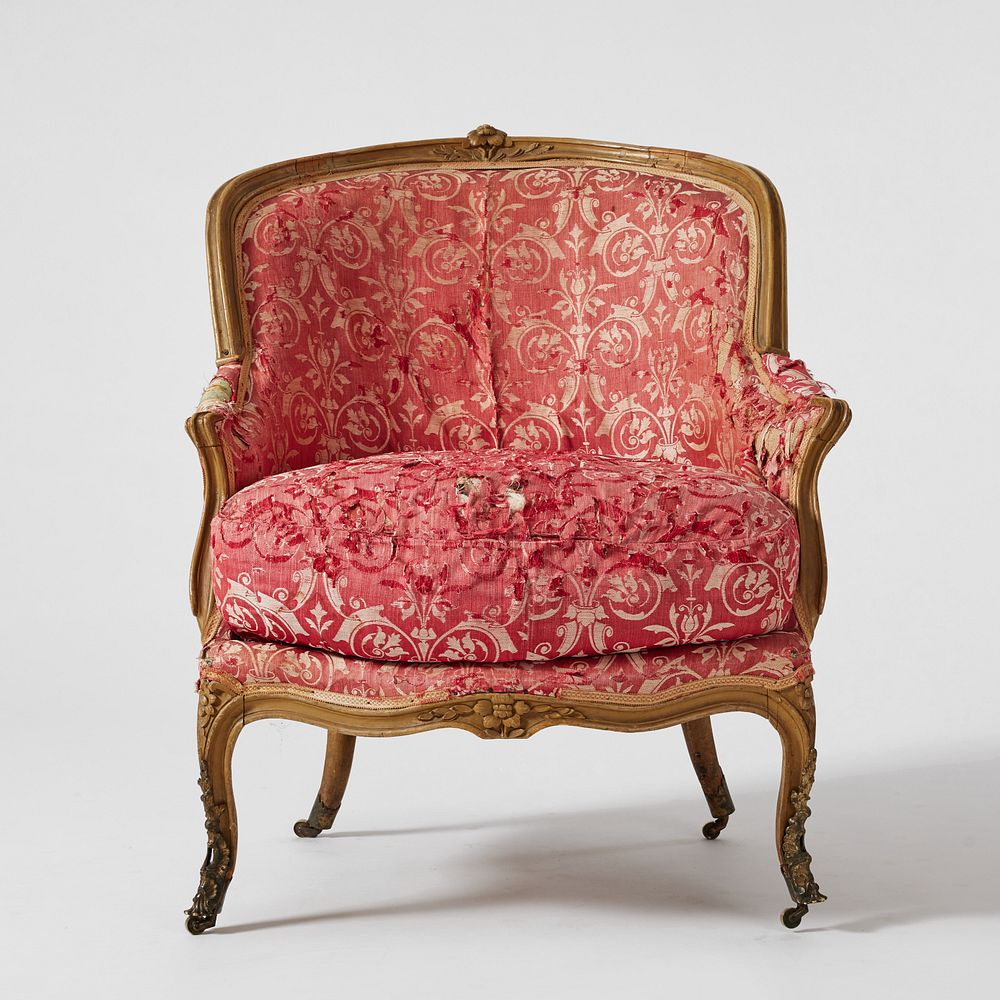
Historical wingspan from more northerly latitudes wafts around two of the auction's items that bear royal provenance, like the armchair with wood-carved decoration and birch frame that was presented as a christening gift in 1758, by none other than Queen Lovisa Ulrika. The recipient of the gift was Fredrika Lovisa Sofia Giös, daughter of Countess Johanna Charlotta Posse, who was also the Queen's maid of honor. As Queen Lovisa Ulrika was the godmother at the christening, this gift was given in the form of an armchair – a so-called ‘bergere en gondole’ - which has since been passed down within the family to its current owner.
Add to this Prince Fredrik Adolf's hunting rifle, a double rifle with a flintlock by the renowned gunsmith Alexandre Chasteau. The rifle is comparable to a similar hunting rifle in the Royal Armoury's collection and was purchased from Carl Robert Lamm's collection. Prince Fredrik Adolf was the youngest son of King Adolf Fredrik and Lovisa Ulrika, brother of Gustav III and Duke Karl. Born in 1750, he was described as one of Europe's most beautiful princes, but was considered much weaker in terms of will and character. His legacy mainly revolves around his love affairs and lavish lifestyle, but his interest in hunting and developing his pleasure palace Tullgarn kept him busy.
The Fine Art & Antiques auction at Stockholms Auktionsverk is held on December 5–6th, at Nybrogatan 32 in Stockholm. The auction is also available for online bidding – view the auction in its entirety – here.
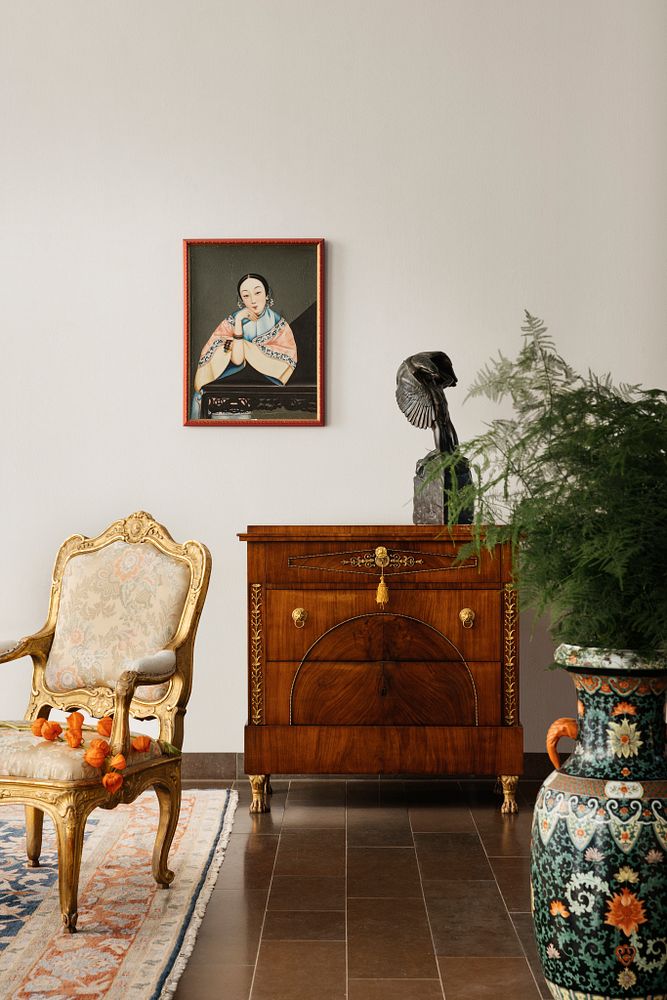
Topics
- Art, Culture, Entertainment
Stockholm's Auktionsverk is the world's oldest auction house – founded in 1674 on the initiative of Baron Claes Rålamb, then appointed Governor of Stockholm. Today, Stockholm's Auktionsverk is the largest auction house in Northern Europe – specializing in art, design, crafts, antiques, and books. With ten branches in Sweden, Finland, and Germany, over 60 experienced and knowledgeable specialists and more than 700,000 registered buyers in 180 countries. After 350 years of operation, the auction house continuously takes great pride in being a trading floor for Swedish and international cultural history.
Stockholms Auktionsverk